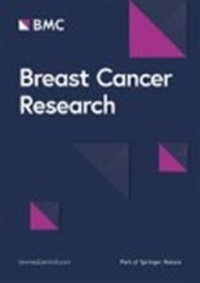Improving lesion detection in mammograms by leveraging a Cycle-GAN-based lesion remover
IF 6.1
1区 医学
Q1 ONCOLOGY
引用次数: 0
Abstract
The wide heterogeneity in the appearance of breast lesions and normal breast structures can confuse computerized detection algorithms. Our purpose was therefore to develop a Lesion Highlighter (LH) that can improve the performance of computer-aided detection algorithms for detecting breast cancer on screening mammograms. We hypothesized that a Cycle-GAN based Lesion Remover (LR) could act as an LH, which can improve the performance of lesion detection algorithms. We used 10,310 screening mammograms from 4,832 women that included 4,942 recalled lesions (BI-RADS 0) and 5,368 normal results (BI-RADS 1). We divided the dataset into Train:Validate:Test folds with the ratios of 0.64:0.16:0.2. We segmented image patches (400 × 400 pixels) from either lesions marked by MQSA radiologists or normal tissue in mammograms. We trained a Cycle-GAN to develop two GANs, where each GAN transferred the style of one image to another. We refer to the GAN transferring the style of a lesion to normal breast tissue as the LR. We then highlighted the lesion by color-fusing the mammogram after applying the LR to its original. Using ResNet18, DenseNet201, EfficientNetV2, and Vision Transformer as backbone architectures, we trained three deep networks for each architecture, one trained on lesion highlighted mammograms (Highlighted), another trained on the original mammograms (Baseline), and Highlighted and Baseline combined (Combined). We conducted ROC analysis for the three versions of each deep network on the test set. The Combined version of all networks achieved AUCs ranging from 0.963 to 0.974 for identifying the image with a recalled lesion from a normal breast tissue image, which was statistically improved (p-value < 0.001) over their Baseline versions with AUCs that ranged from 0.914 to 0.967. Our results showed that a Cycle-GAN based LR is effective for enhancing lesion conspicuity and this can improve the performance of a detection algorithm.利用基于 Cycle-GAN 的病灶清除器改进乳腺 X 光检查中的病灶检测
乳腺病变和正常乳腺结构的外观差异很大,会使计算机检测算法感到困惑。因此,我们的目的是开发一种病灶高亮器(LH),以提高计算机辅助检测算法的性能,从而在乳房X光筛查中检测出乳腺癌。我们假设,基于循环-广义聚类分析的病变去除器(LR)可以充当病变高亮器,从而提高病变检测算法的性能。我们使用了来自 4832 名女性的 10,310 张筛查乳房 X 光照片,其中包括 4,942 个召回病灶(BI-RADS 0)和 5,368 个正常结果(BI-RADS 1)。我们将数据集按 0.64:0.16:0.2 的比例分为训练:验证:测试褶皱。我们从 MQSA 放射科医生标记的病灶或乳房 X 光照片中的正常组织中分割出图像片段(400 × 400 像素)。我们训练了一个 Cycle-GAN 来开发两个 GAN,其中每个 GAN 将一个图像的样式转移到另一个图像上。我们将将病变风格转移到正常乳腺组织的 GAN 称为 LR。然后,我们将 LR 应用于原始乳房图像后,通过颜色融合乳房图像来突出病变。我们使用 ResNet18、DenseNet201、EfficientNetV2 和 Vision Transformer 作为骨干架构,为每个架构训练了三个深度网络,其中一个是针对病变高亮乳房 X 光照片(高亮)训练的,另一个是针对原始乳房 X 光照片(基线)训练的,还有一个是高亮和基线组合(组合)训练的。我们在测试集上对每个深度网络的三个版本进行了 ROC 分析。所有网络的组合版本在从正常乳腺组织图像中识别出有召回病灶的图像方面取得了 0.963 到 0.974 不等的 AUC 值,与它们的基线版本(AUC 值在 0.914 到 0.967 之间)相比,在统计学上有所改进(p 值 < 0.001)。我们的研究结果表明,基于 Cycle-GAN 的 LR 能有效增强病变的清晰度,从而提高检测算法的性能。
本文章由计算机程序翻译,如有差异,请以英文原文为准。
求助全文
约1分钟内获得全文
求助全文
来源期刊

Breast Cancer Research
医学-肿瘤学
自引率
0.00%
发文量
76
期刊介绍:
Breast Cancer Research is an international, peer-reviewed online journal, publishing original research, reviews, editorials and reports. Open access research articles of exceptional interest are published in all areas of biology and medicine relevant to breast cancer, including normal mammary gland biology, with special emphasis on the genetic, biochemical, and cellular basis of breast cancer. In addition to basic research, the journal publishes preclinical, translational and clinical studies with a biological basis, including Phase I and Phase II trials.
 求助内容:
求助内容: 应助结果提醒方式:
应助结果提醒方式:


